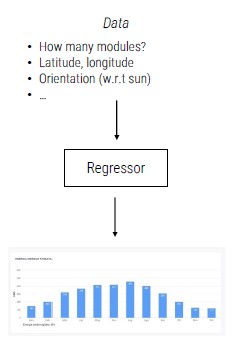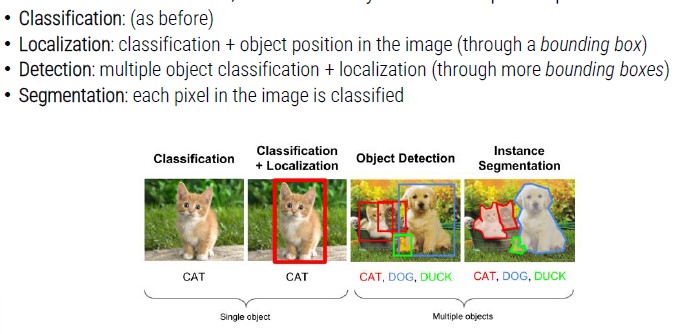Model
The model is the heart of the AI in our system. It is one of the most delicate and decisive elements of the entire process:
- Model -> mechanism with which input data are transformed in outputs
Machine Learning Tasks
There are different tasks in ML depending on the output we want:
- Classification
- Regression
- Clustering
Classification
- We have a specific input, a model (classifier) which outputs a class (pattern)
- If there are only 2 classes, we call the problem *binary* classification, while with multiple classes, we have *multi-class* classification
class = data set having common properties
The concept of label and semantic is related to the concept of class, since it strictly depends on the working context.
Examples of classification:
- Spam detection
- Input: email texts
- Output: yes/no (spam)
- Credit card fraud detection
- Input: list of bank operations
- Output: yes/no (fraud)
- Face recognition
- Input: images
- Output: identity
- Medical diagnosis
- Input: x-ray images
- Output: benign/malignant (tumor)

Regression
Given a specific input, the model (regressor) outputs a continuous value (data -> value). You can see a regression task as a classification task with a high number of classes
Examples of regression
- Estimation of a person's height based on weight
- Estimated sale prices of apartments in the real estate market
- Risk estimation for insurance companies
- Energy prediction produced by a photovoltaic system
- Health costs prediction models

Clustering
Identify groups (clusters) of data with similar characteristics, usually applied in an unsupervised learning setting (patterns are not labeled and classes are not known in advance).
Usually, the unsupervised nature of the problem makes it more complex than classification.
Examples of clustering
- Marketing (user groups)
- Genetics (group by DNA)
- Bioinformatics (partitioning of genes)
- Vision (unsupervised segmentation)

Artificial Vision
For artificial vision domain, we can identify even more specific problems

Created: October 19, 2022 12:59:15